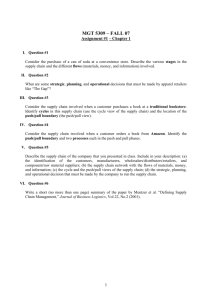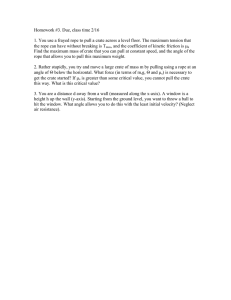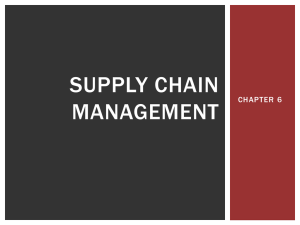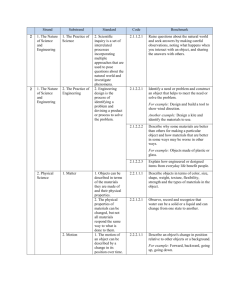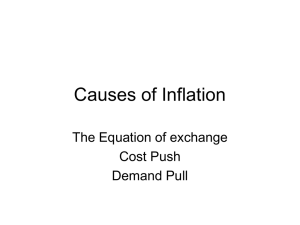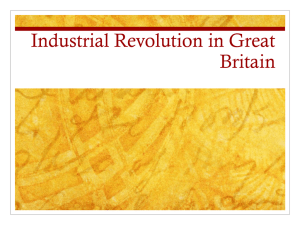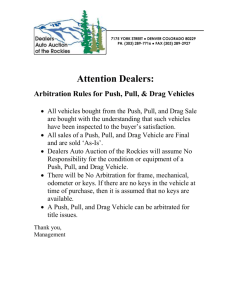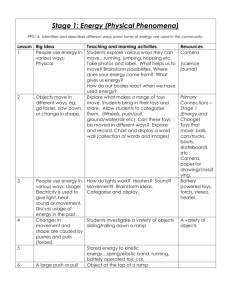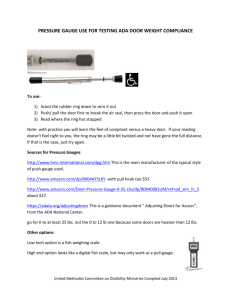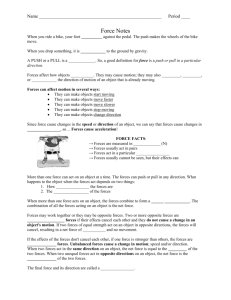Mech. Adv. Wkst
advertisement
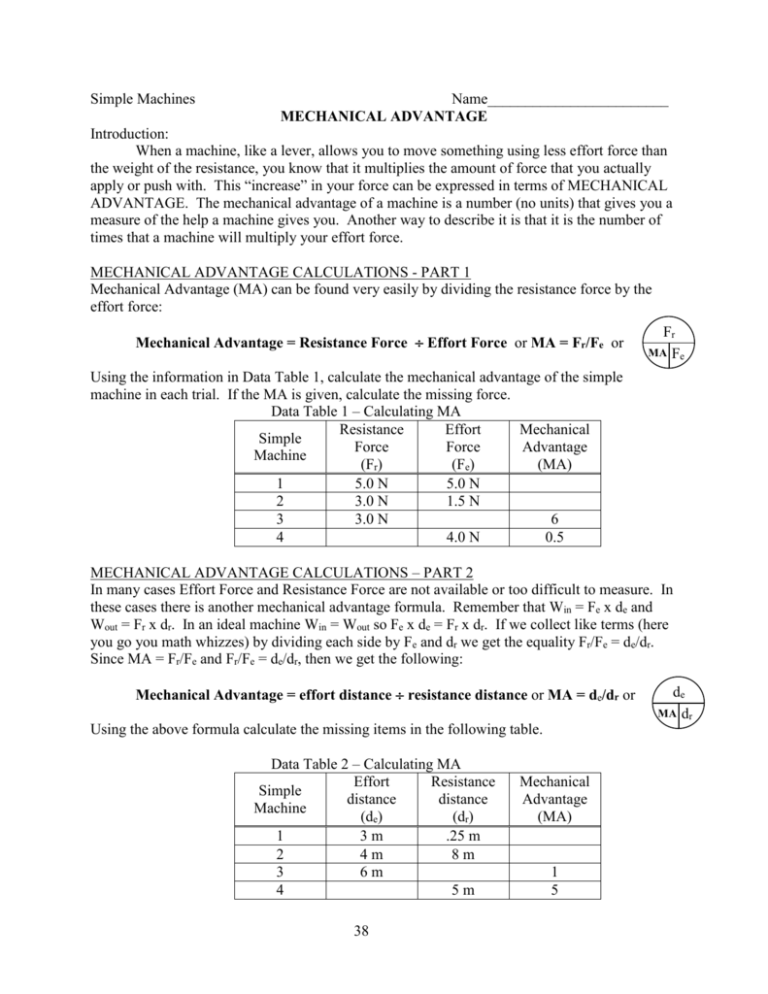
Simple Machines Name________________________ MECHANICAL ADVANTAGE Introduction: When a machine, like a lever, allows you to move something using less effort force than the weight of the resistance, you know that it multiplies the amount of force that you actually apply or push with. This “increase” in your force can be expressed in terms of MECHANICAL ADVANTAGE. The mechanical advantage of a machine is a number (no units) that gives you a measure of the help a machine gives you. Another way to describe it is that it is the number of times that a machine will multiply your effort force. MECHANICAL ADVANTAGE CALCULATIONS - PART 1 Mechanical Advantage (MA) can be found very easily by dividing the resistance force by the effort force: Mechanical Advantage = Resistance Force Effort Force or MA = Fr/Fe or Fr MA Fe Using the information in Data Table 1, calculate the mechanical advantage of the simple machine in each trial. If the MA is given, calculate the missing force. Data Table 1 – Calculating MA Resistance Effort Mechanical Simple Force Force Advantage Machine (Fr) (Fe) (MA) 1 5.0 N 5.0 N 2 3.0 N 1.5 N 3 3.0 N 6 4 4.0 N 0.5 MECHANICAL ADVANTAGE CALCULATIONS – PART 2 In many cases Effort Force and Resistance Force are not available or too difficult to measure. In these cases there is another mechanical advantage formula. Remember that Win = Fe x de and Wout = Fr x dr. In an ideal machine Win = Wout so Fe x de = Fr x dr. If we collect like terms (here you go you math whizzes) by dividing each side by Fe and dr we get the equality Fr/Fe = de/dr. Since MA = Fr/Fe and Fr/Fe = de/dr, then we get the following: Mechanical Advantage = effort distance resistance distance or MA = de/dr or Using the above formula calculate the missing items in the following table. Data Table 2 – Calculating MA Effort Resistance Simple distance distance Machine (de) (dr) 1 3m .25 m 2 4m 8m 3 6m 4 5m 38 Mechanical Advantage (MA) 1 5 de MA dr Either method should come out with the same mechanical advantage unless the conditions are less than ‘ideal’. If the conditions are not ideal, Fr/Fe will give actual MA whereas de/dr will provide the theoretical MA. Questions: 1. If a machine has a mechanical advantage greater than one, it helps you by… a. Reducing the amount of force you apply (makes it easier to push or pull) b. Reducing the distance you need to pull or push (you don’t have to push or pull as far). c. Changes the direction of your force. 2. If a machine has a mechanical advantage of one, what can it do for you? __________________________________________________________________________ 3. If a machine has a mechanical advantage less than one, what kind of help might it give you? a. Reducing the amount of force you apply (makes it easier to push or pull) b. Reducing the distance you need to pull or push (you don’t have to push or pull as far). c. Changes the direction of your force. 4. If a machine has a mechanical advantage of more than one, how does the effort distance compare to the resistance distance? a. They are the same. b. The effort distance is greater. c. The resistance distance is greater. USING THE FORMULAS TOGETHER The formulas for MA can be used together to find missing information. Calculate the answers to the following question. 5. If you use a pulley system with a mechanical advantage of 4 to lift a crate that weighs 750 N and you pull 12 meters of rope, calculate your effort force (Fe) and the distance the crate was lifted (dr). 6. You use another pulley system to raise a crate above your head. You pulled 30 m of rope to raise the crate 7.5 m. How much force did you need to apply if the crate weighed 700 N? 7. You use a lever to pry a 1500 N stump from the ground using a force of only 250 N. How far did you have to push if the stump was raised .25 meters (assume the lever is ideal)? 39
